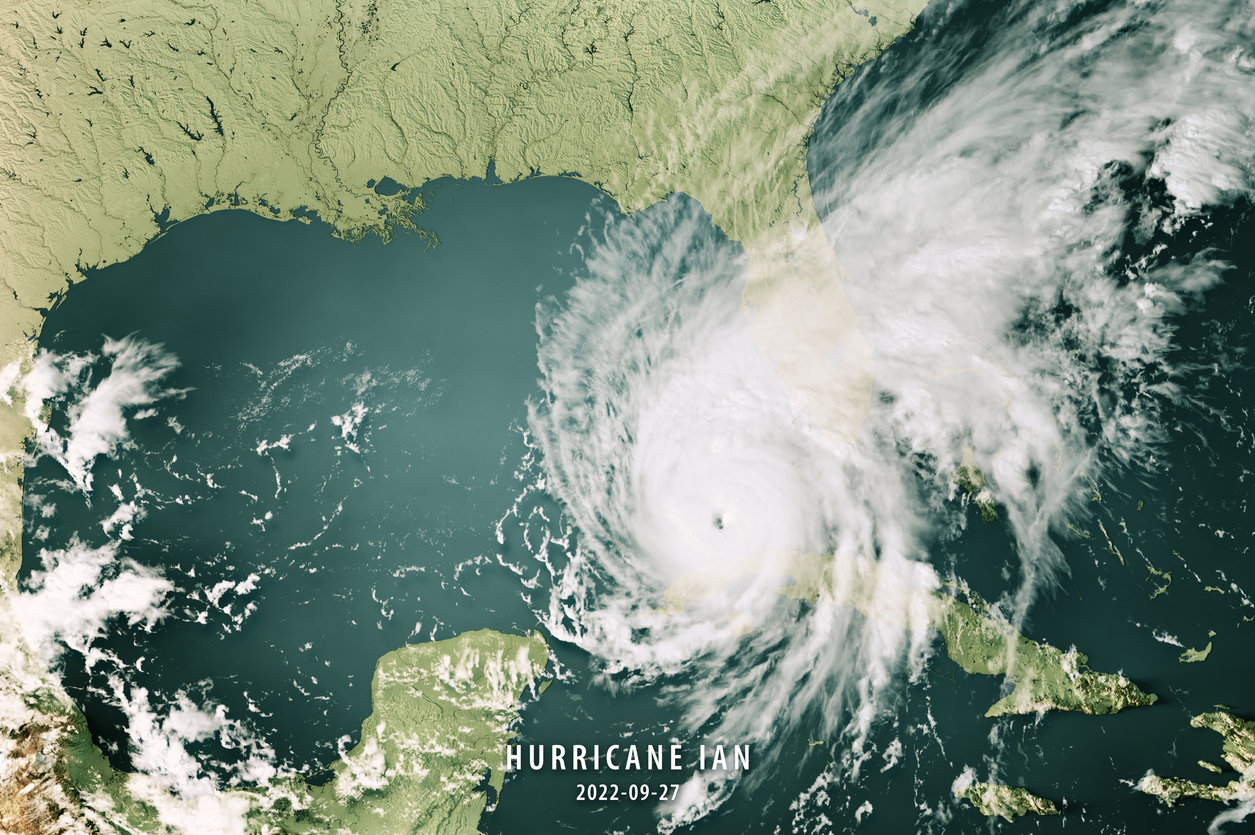The United States had an average hurricane season, and despite being one of the warmest years on record, 2022 did not break temperature records for the country as a whole, according to federal climate scientists on Tuesday. However, a series of major disasters, including the deadly Hurricane Ian, increased the cost of extreme weather events to around $165 billion.
The National Oceanic and Atmospheric Administration listed drought in the western United States, early and swift-moving wildfires in Alaska, and Hurricane Ian’s extensive destruction among the year’s record-breaking events in its annual national climate assessment.
Ian, which made landfall in Florida as a Category 4 hurricane on September 28, caused an estimated $112.9 billion in damage. Only two other major storms, Hurricane Harvey in 2017 and Hurricane Katrina in 2005, caused more costly damage, according to NOAA. Last year, there were 14 named Atlantic storms, which was at the low end of NOAA’s forecast for the region.
According to NOAA, 18 disasters cost $1 billion or more in damages this year, including floods in Missouri and Kentucky, tornadoes ripping through the South, and a powerful wind storm, or derecho, whose gusty path across the Midwest downed power lines and damaged buildings.
Overall, the agency calculated that weather and climate disasters killed at least 474 people and caused damages totaling more than $165 billion last year, making it the third-costliest year since 1980. In comparison, disaster damage costs in 2021 are expected to be around $155.3 billion.
Storms and other extreme weather events are expensive when they hit developed, densely populated areas, and many more people live in areas vulnerable to such events, according to NOAA.
Temperatures in several U.S. states exceeded their annual averages in 2022. Florida and Rhode Island had their fifth-warmest years on record, while Massachusetts had its sixth-warmest year on record. Due to a months-long heat wave that scorched the southern plains throughout the spring and summer, Texas set monthly high-temperature records between April and July.
The annual average temperature in the continental United States was 53.4 degrees Fahrenheit, which was warmer than two-thirds of the years on record. The previous year, 2021, was the fourth-warmest on record, with an annual average temperature of 54.5 degrees Fahrenheit.
Though there is some variation between individual years, scientists have found that global annual temperatures have been steadily rising for decades. In 2021, the United Nations Intergovernmental Panel on Climate Change declared that human activities had “unambiguously” warmed the planet.
According to IPCC scientists, emissions of heat-trapping gases such as carbon dioxide have contributed to the long-term trend of rising global temperatures since the 18th century. According to NOAA, global land and ocean temperatures have risen by 0.14 Fahrenheit degrees on average every decade since 1880, but that rate has more than doubled since 1981. The last eight years have been the warmest on record, according to a study of global temperature records released Tuesday by the European Union’s Copernicus Climate Change Service.
According to the new report, wildfires will burn more than 7.5 million acres across the United States in 2022, which is close to the agency’s average. There were a few exceptions: The Calf Canyon and Hermits Peak fires burned more than 341,000 acres in New Mexico in the spring, forcing mass evacuations and destroying hundreds of homes.
Wildfires in Alaska consumed a million acres by mid-June, earlier and faster than in the previous three decades.
Up to 63% of the country was in drought in October 2022, making it the largest area affected by low precipitation since 2012. According to NOAA, at least 40% of the country has been in drought for 119 weeks, which is the longest continuous dry spell in the records of the U.S. Drought Monitor, a multiagency effort that has tracked precipitation since 1999.
“As the drought worsens year after year,” said Dan McEvoy, a climate scientist at the Western Regional Climate Center in Reno, Nev., who was not involved in the assessment. He noted that some parts of the western United States, including the Colorado River Basin, have been experiencing near-constant drought since 2000.
Dr. McEvoy stated that heavy rains in California and other western states bolstered the region’s water reserves in the final weeks of 2022 through rainfall and mountain snowpack. However, the winter wet season must continue to reverse the drought trend.
“It’s a good sign, but we can’t declare victory just yet,” he explained.














